#16th century ring
Explore tagged Tumblr posts
Text
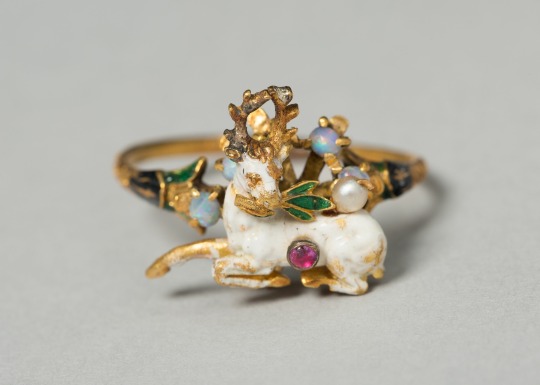
Stag with Herb Branch Mounted as a Ring
1550-1600
German or French
Gold, enamel, ruby, opals, and pearls
Art Institute of Chicago
#rings#antique jewelry#16th century#16th century fashion#16th century art#fashion history#antique rings#jewelry#frostedmagnolias
8K notes
·
View notes
Text

Moonstone Ring with a Carved Frog, Late 16th to Early 17th Century
From the London Museum
#moonstone#ring#frog#jewellery#fashion#fashion history#history#late 16th century#early 17th century#16th century#17th century#1500s#1600s
506 notes
·
View notes
Text
my Nevarra headcanon is that they love Memento Mori rings
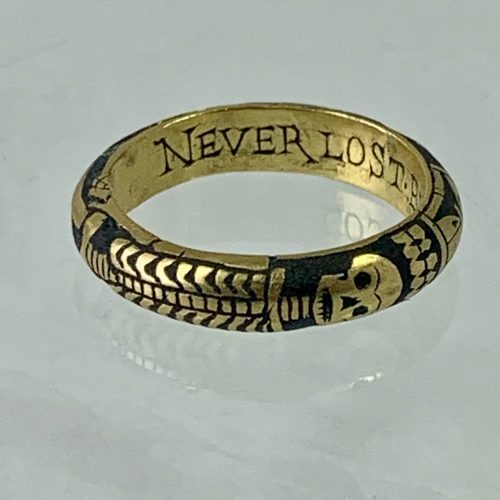

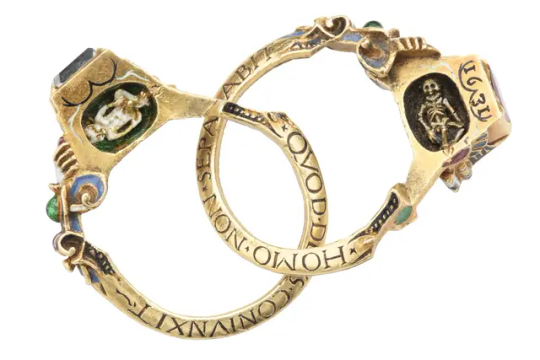

#(irl these rings / types of jewellery more generally are thought to have been in use in Europe from the 16th century as a way to#remember a recently deceased loved one and serve as a reminder that death is never far away)#which is a very cool concept to me and i will be stealing it for dragon age purposes#i like the idea that they buy or exchange them for special occasions. not just deaths but also milestone birthdays and weddings and such#as a culture they're big on death and also gold and also heavy ornamentation so this makes sense to me#and you know. a birthday is a step closer to death. a wedding means more heartbreak when death does come. a shared grave. etc
172 notes
·
View notes
Text
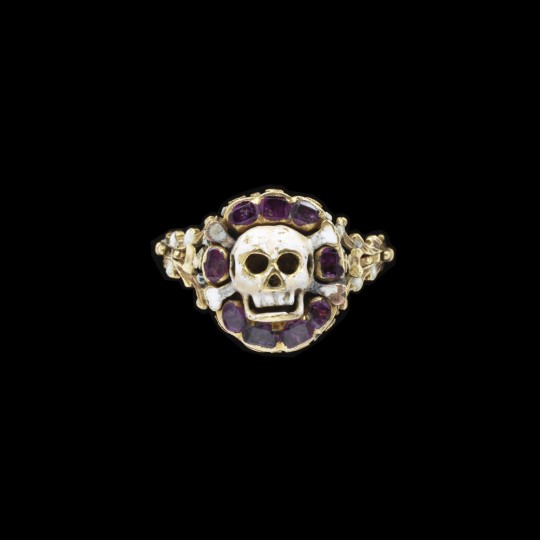
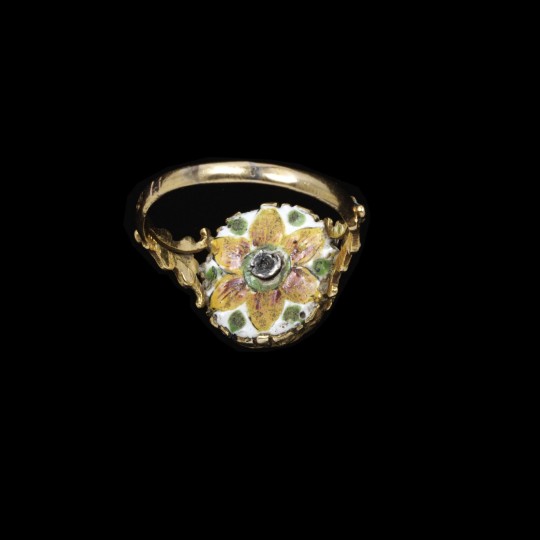

~ Ring.
Date: 1550-1575
Place of origin: Europe
#16th century#16th century art#16th century jewelry#history#museum#archaeology#ring#jewelry#1550#1575
1K notes
·
View notes
Text

1571 Ludger tom Ring the Younger - Dorothea von Vechelde née von Brotizem
(Wawel Castle)
155 notes
·
View notes
Text

Sundial with compass in form of a gold signet ring, marked with H.C., 1568
#naval navigation#naval jewellery#seal signet ring#sundial with compass#16th century#age of discovery
1K notes
·
View notes
Text
another day reading lotr, another heart attack before remembering that certain slurs meant something different to british ppl in the 60s
#got curious about where it originated from and apparently it might be from a mean term for old 16th century widows#who made a living gathering firewood#and then the whole effeminacy using a comparison to women as an insult thing#which is rlly interesting actually#reading lotr#the fellowship of the ring#lotr#lord of the rings#tolkien#jrr tolkien#etymology#literature
23 notes
·
View notes
Text

Ludger tom Ring the Younger - Self Portrait
86 notes
·
View notes
Text
Flynn and Eve are essentially Library-married, right? That’s basically what Tethering is.
I was reminded of this meme and it’s now my headcanon that when they do get actual rings these are what the rings are
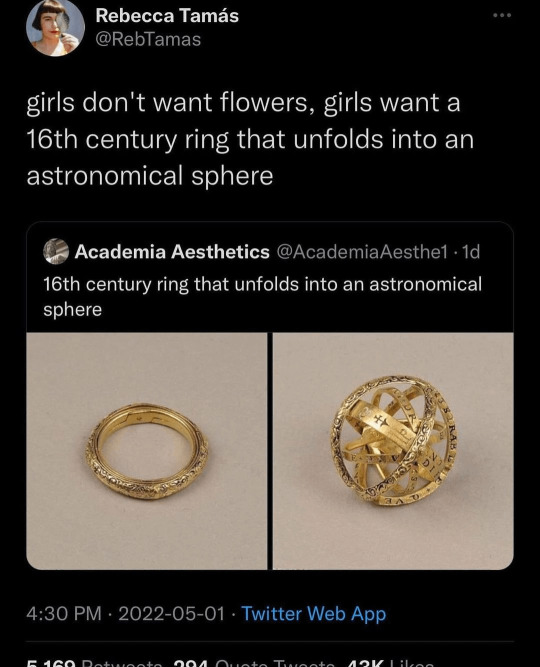
Like
It’s pretty but it’s also ✨magical vibes✨ yk?
Someone write this fic I’m begging
36 notes
·
View notes
Text
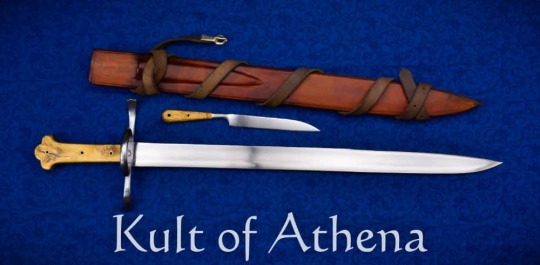



Ádám Bodorics – Beham Messer with Ring Hilt and Brass Frame Boxwood Grip
This Beham style Messer by specialist swordsmith Ádám Bodorics is a wonderfully agile sword in the hand that strikes with velocity and power – its wide and well-tempered blade bites deeply and its thin profile along the main cutting portion of the blade passes through a target with little drag and resistance – a truly fierce performer in a scrap of a melee! The thick ring at the hilt gives impressive protection to the entire hand from even notably larger weapons and the grip is a unique composite with the thick tang riveted and embedded between two halves of smoothly polished boxwood which is framed in strips of finely worked brass. The wood grip halves may look cracked, but they are actually created from a deliberate reconstruction of smaller pieces with strong and colored bonding filler in order to give the grip a unique theme and appearance that is perfectly apt to the troubled times of early 16th century Germany.
The sword is matched with scabbard of well-carved wood which is wrapped in linen for a binding to aid in durability which is then finished with overlaid tight leather with a compartment for a matching byknife which is included. Integrated and knotted to the scabbard is a thick sword belt with an adjustable buckle for wear. Below is Ádám’s own words on his unique creation offered here:
Messers take a huge variety of form and construction. This piece is based on a 1540 woodcut by Hans Sebald Beham with a subtle Memento Mori theme. In the 16th century, knifelike sidearms undergo several changes, one of them being the increasing regularity of hidden tangs. Illustrations from the period sometimes show rather complex grip shapes that would be complicated with a full-tang construction, but a hidden or a frame tang makes them much more trivial. Hans Sebald Beham often shows interesting grip shapes even in a bucolic setting, and it’s one of his woodcuts I based this piece on.
The straight and nimble blade is ground from 51crv4 (6150) high-carbon steel and is heat-treated to 50-52 HrC. It is optimized for cutting and slashing. It has plenty of distal taper and a wide fuller along it’s length. The cross has a gentle S-shape and a sidering instead of a Nagel. It is still affixed to the blade with a rivet o make sure it’s not mistaken for a sword or falchion or storta. The finials of the cross echo the trilobate design of the grip. The real tang of the blade reaches to about two-thirds of the grip. A thin steel plate was cut to the intended shape of the grip with a brass strip formed and soldered along it’s edges. The grip panels sit on the edges of the frame with the cavity between the panels and the tang filled with adhesive following the style of surviving frame-tang sidearms.
The byknife is hand-forged and ground from 80crv2 with integrated bolsters and a forge-welded mild steel tang. The grip panels are affixed by glue and tubular brass rivets of increasing diameter. The grip panels are boxwood, buxus sempervirens. These pieces were hand-picked to highlight the effects of the blight eradicating old growth, namely the aggressive checking from quick drying following rapid defoliation and the cloudy dark discolorations. There is evidence for boxwood’s continuous use for over two millennia, but as specimens large enough for larger carvings take an immense amount of time to grow, preventive culling or neglect of infected trees both make it near-impossible for this material to stay for long. To me, using these specific slabs was like erecting a gravestone, removing the need for any overt Memento Mori or Totentanz motifs.
The scabbard has a wooden core, linen wrapping and a vegetable tanned leather wrap with an integrated subsheath for the byknife. It is dyed a light brown and is undecorated to keep the attention on the hilt of the Messer. There is a belt threaded into two slits in the back of the sheath, crossing over to either side.
#Kult of Athena#KultOfAthena#New item Wednesday#Ádám Bodorics#Adam Bodorics#Beham Messer with Ring Hilt and Brass Frame Boxwood Grip#sword#swords#weapon#weapons#blade#blades#European Swords#European Weapons#Medieval Swords#Medieval Weapons#Renaissance Swords#Renaissance Weapons#messers#16th century
33 notes
·
View notes
Text
Discover the Promise Ring: a romantic symbol with roots in 16th-century Europe, now trending among young couples! 💖



These versatile rings come in various styles, from heart shapes to infinity symbols, and can be worn on either hand to represent commitment and future plans. 💍✨
2 notes
·
View notes
Text

Ring
c. 1525-1575
unknown maker, England
Victoria and Albert Museum
#16th century#antique jewellery#antique jewelry#jewelry#rings#antique rings#fashion history#frostedmagnolias
821 notes
·
View notes
Text

Silver gilt ring with garnet, European, 1400-1500
From the Victoria and Albert Museum
#jewellery#ring#fashion#fashion history#european#garnet#1400#1500#1400s#1500s#15th century#16th century#history
431 notes
·
View notes
Text
Here we have something so rare and beautiful as a large renaissance cameo, set into a 19th century ring. This kind of motif is called a 'marriage portrait', and these cameos became popular during the 15th century - looking back to even older cameos featuring mythological couples or Roman rulers Renaissance rulers in their turn would have themselves depicted side by side, in the likeness of a Roman Emperor and Empress While we do not know who the couple on this cameo are, the symbol of their union has survived for 400 - 500 years.
How wonderful isn't that?
A piece of history, available for purchase.
Please message me for further details
#renaissancering#renaissance#antique jewellery#antique ring#cameo#marriage ring#history lover#16th century#wearable art#wear history#historic jewelry#renaissance cameo#renaissance art#old jewelry
5 notes
·
View notes
Text

~ Betrothal ring.
Date: 15th–16th century
Place of origin: Italy
Medium: Silver
#history#museum#archeology#archaeology#jewelry#15th century#16th century#ring#italy#betrothal ring#marriage#silver
604 notes
·
View notes
Photo

1587 Hermann tom Ring - Portrait of Katharina von Hatzfeld
(National Museum, Warsaw)
139 notes
·
View notes